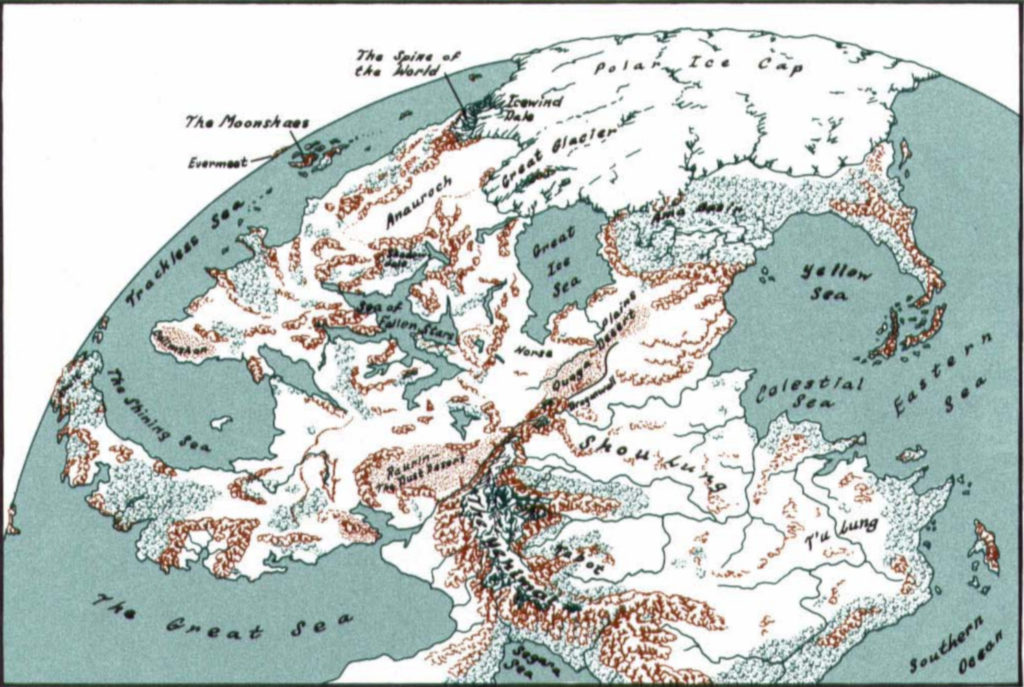
Welcome to the first in a short series on the various campaign settings from Dungeons & Dragons. In this series GameRVW plans to outline the origins and details of the various campaign settings, the related products and whether they are still in use or not. First up is Forgotten Realms, for a great many players their first experience of a D&D campaign setting.
Origins
If you can dream it, you can build it….
The Forgotten Realms campaign setting was birthed from the imagination of young Ed Greenwood as a location for various fantastical adventures and stories. As Ed got older, the sophistication of this vision grew, with the defining concept that many of our real world’s historical stories and cultures began in the Forgotten Realms, lost to legend over time.
In 1975 Ed was introduced to D&D by a friend and, like many of the young players and DM’s of the era, he began to see that this could be the perfect set of tools to turn the Forgotten Realms into something much more tangible. Whether he had any inkling at all about just how tangible it would
become is not known!
Again, like many a good campaign, as his players asked more questions and dug further into the world, Ed developed the texture and details of the campaign setting. As the player-character has a propensity to turn right when the adventure was supposed to be on the left, Forgotten Realms
became richer, fuller and, critically, more real.
Gradually Forgotten Realms grew in fame, largely thanks to word of mouth, conventions and Dragon magazine, with the latter sharing many articles about the setting and allowing enterprising young DM’s to set their own campaigns in this new world. In 1986 Jeff Grubb approached Ed to begin turning his own campaign setting into a new core campaign world for the new Advanced Dungeons and Dragons 2nd edition. The rest was history….
What Is Forgotten Realms
The Forgotten Realms is set in the land of Faerun on the world of Toril or Abeir-Toril depending on the edition. Forgotten Realms resembles, at least on first glance, medieval western Europe and has a nice familiarity to anyone who has read historical fiction or Lord of the Rings.

Men do not rule this world; there are dwarves, orks and of course the Drow elves. There is a broad range of nations from the Elves in the High Forest to the confederacy of the Dalelands to the Mongol inspired Hordelands, with many more in-between. Of course, many adventures and stories extend out of the city of Waterdeep. This prosperous and populous harbour-city is often referenced in stories and legends and there’s no shortage of ways for
an adventurer to make some gold, earn some XP or lose their way or even their life in the Undermountain.
In addition, the Forgotten Realms is home to other legendary names like the Underdark, the Sword Coast or Baldur’s Gate. To be clear, Forgotten Realms reputation as one of the most successful campaign settings is well earned.
Still In Use
As of 2020 and 5th Edition, Forgotten Realms remains the primary D&D setting and officially supported by a vast array of products. There seems to be no shortage of support or fandom for the Forgotten Realms, with plenty of adventures and sourcebooks out there for anyone wanting to adventure across Faerun.
Related Products
There’s a galaxy of related products to the Forgotten Realms from video games to board-games and a vast library of novels. Some brief highlights from the selection include Baldur’s Gate and Baldur’s Gate 2, Lords of
Waterdeep and, showing my age a bit here, the Pools of Radiance Series on the PC in the classic Gold Box series.
In short, if you’re into this campaign setting, you’re going to be spoiled for choice in terms of inspiration!
Final Thoughts
Forgotten Realms is many people’s entry point due to its association with D&D’s boom period and the sheer volume of support it has received, with some really good foundational work and deep lore for the setting. There’s also a nice familiar approachability about the setting making it fertile ground for new players and DMs.
As a mild point of criticism, I’d describe it as fairly generic but this could be a strength too as many of the concepts, races and cultures will be well known to your players, especially new players, helping with immersion.






